14th Annual Maritime Risk Symposium to be Held Nov. 14-16 at SUNY Maritime

The 2023 Maritime Risk Symposium (MRS) will be held Nov. 14-16, 2023, as an in-person event, hosted by Maritime College, State University of New York (SUNY) at the Maritime Academic Center. The theme of the 14th annual event is “Managing Impacts of Supply Chain Disruptors, Renewable Energy, Emerging Technology on the Maritime Transportation System (MTS)” with a focus on offshore infrastructure risk and disruptors. Founded in 1874, Maritime College is the oldest maritime college in the United States, providing mariner training for 150 years.
Floating Offshore Wind: New Seascape, New Challenges
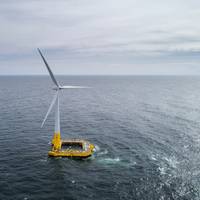
Offshore wind energy planners are giving close review to fixed-tower systems in order to extend lessons learned to floating wind towers, under development now. In the U.S., floating towers have been most closely associated with plans for new wind energy areas (WEA) in the Pacific, off of California and maybe Oregon and Washington. But important research is also taking place in Maine, at the University of Maine, because of deep ocean Atlantic areas there, and floating towers may also be used in the Gulf of Mexico.As most readers likely know…
Melting Arctic Ice Could Transform International Shipping Routes -Study
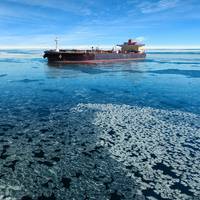
Melting ice in the Arctic Ocean could yield new trade routes in international waters, reducing the shipping industry’s carbon footprint and weakening Russia’s control over trade routes through the Arctic, a study found.With climate change rapidly warming the world’s oceans, the future of the Arctic Ocean looks grim. Climate models show that parts of the Arctic that were once covered in ice year-round are warming so quickly that they will be reliably ice-free for months on end in as few as two decades.
Opinion: Let's Get the Plastic Out of Our Lives (& Waterways)

A confession. I'm part of a very big problem that's easy to ignore. Last year, I contributed the U.S. average-per-person 300 pounds of plastic garbage to wherever it went after convenient curbside pickup. So out of sight, out of mind, right? Not really, but does it matter? Yes, it does.In a fascinating recent report, the National Academy of Sciences, Engineering, and Medicine politely told us that we're choking ourselves to death on manufactured plastic waste and that 80% of the harmful plastic in the ocean comes from land-based sources.It's the micro-plastics…
Maritime Risk Symposium: Registration is Now Open
The University of Houston’s College of Technology will host the 12th Annual Maritime Risk Symposium, a virtual event, in collaboration with the National Academy of Sciences from November 1-5, 2021.The Maritime Risk Symposium is an annual conference in which government and maritime industry leaders, port representatives, researchers, and solution providers convene to examine current and emerging threats to maritime security.RegistrationRegistration for this year’s virtual Maritime Risk Symposium has been reduced to $50 per person. Registrants will receive a personalized code to participate in conference sessions. Following the Symposium…
"Early Bird" Registration for 2021 Maritime Risk Symposium ends soon
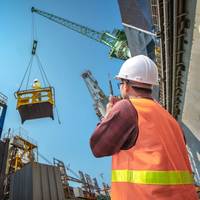
The University of Houston’s College of Technology will host the 12th Annual Maritime Risk Symposium (MRS 2021), in collaboration with the National Academy of Sciences, from November 2-4, 2021, at the at the University of Houston’s Student Center-South.The Maritime Risk Symposium is an annual three-day conference in which government and maritime industry leaders, port representatives, researchers, and solution providers convene to examine current and emerging threats to maritime security.
Registration Open for the 2021 Maritime Risk Symposium
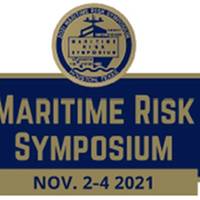
The University of Houston’s College of Technology will host the 12th Annual Maritime Risk Symposium (MRS 2021), in collaboration with the National Academy of Sciences, from November 2-4, 2021, at the at the University of Houston’s Student Center-South.The Maritime Risk Symposium is an annual three-day conference in which government and maritime industry leaders, port representatives, researchers, and solution providers convene to examine current and emerging threats to maritime security.
Registration opens for the 2021 Maritime Risk Symposium in Houston
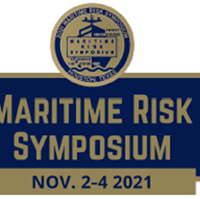
The University of Houston’s College of Technology will host the 12th Annual Maritime Risk Symposium (MRS 2021), in collaboration with the National Academy of Sciences, from November 2-4, 2021, at the at the University of Houston’s Student Center-South.The Maritime Risk Symposium is an annual three-day conference in which government and maritime industry leaders, port representatives, researchers, and solution providers convene to examine current and emerging threats to maritime security.
Digital Twins: Rivers, Oceans, Harbors Recreated
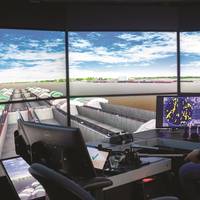
In 2001, George Burkley, a maritime educator, wrote a look-ahead article for Maritime Reporter and Engineering News, presenting the benefits and real-world payoffs from using simulators in maritime education. In the late 1990s, new tech and software advances were creating scenario programs that moved a student closer and closer to the realities demanded by, well, reality. “The future is here, and we are ready to simulate it,” Burkley concluded.Burkley is now executive director at the Maritime Pilots Institute in Covington, La.
Satellites Expose Risks of Forced Labor in Global Fishing
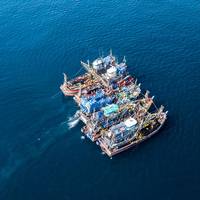
Fishing vessels with crews of forced laborers behave in systematically different ways to the rest of the global fleet, according to a study purporting to be the first to remotely identify vessels potentially engaged in modern slavery.Using satellite data, machine learning and on-the-ground expertise from human rights practitioners, U.S. researchers found up to 26% of about 16,000 industrial fishing vessels analyzed were at high risk of using forced labor.As many as 100,000 people are estimated to work on these high-risk vessels, many of whom are potential victims of forced labor.
Op/Ed: Candidates Should Not Ignore Offshore Safety Advances
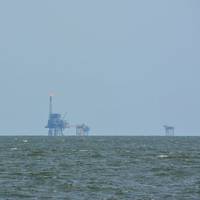
The American Gulf of Mexico is home to impressive industry and even more incredible beauty. Every day, fishermen, conservationists, tour guides, canal and port dredgers, offshore oil and gas workers and countless others go to work in and around the Gulf of Mexico. What links them together is a passion to safely do their jobs in a way that strengthens the Gulf Coast’s natural resources.When candidates and elected officials advocate for “no more drilling, including offshore,” they…
Maritime Risk Symposium, Nov. 12-15 at SUNY Maritime
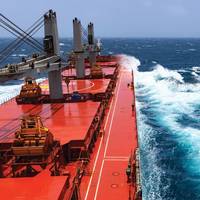
The State University of New York Maritime College, in collaboration with the U.S. Coast Guard, National Academy of Sciences, academic institutions, industry partners, and federal, state and local agencies, will host the 10th Annual Maritime Risk Symposium (MRS 2019) Nov. 13-15, 2019, at New York Maritime College located in the Bronx, New York.MRS 2019 will bring together academics, government and commercial entities to discuss the threats, challenges and risks associated with the Marine Transportation System with a focus on current and future marine transportation challenges and threats.
American Waterways Operators Responds to Senate
On Wednesday, the U.S. Senate rejected legislation - Vessel Incidental Discharge Act (VIDA) - that would have simplified regulatory oversight of vessel discharges. The Coast Guard Authorization Act of 2017, due to inclusion of the Vessel Incidental Discharge Act (VIDA) within the bill, failed by three votes to reach the 60 votes needed in the United States Senate to end debate and move to a vote on final passage. While the vote tally reflected bipartisan support for the Coast Guard authorization bill with VIDA included, the votes against included several senators who were previously supporters of VIDA, either in this Congress or the previous Congress. In response to the vote, Thomas A.
Black Carbon in Arctic Blamed on Russia
According to a new study published in the journal Proceedings of the National Academy of Sciences, 35% of black carbon in the Russian Arctic originates from residential heating sources, 38% comes from transport, while open fires, power plants, and gas flaring are responsible for only 12%, 9%, and 6% respectively. These estimates confirm previous work for some areas of the European Arctic, but for Siberia, the findings differ from previous research, which had suggested that contribution from gas flaring were much higher. Black carbon, or soot, increases snow and ice melt by dulling the reflective surface and increasing the absorption of sunlight.
Fighting Barnacle Buildup with Biology
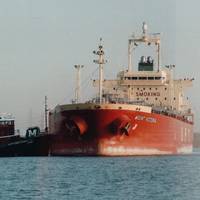
New research solves a mystery behind the gunk that sticks to the bottoms of ships. The coating of barnacles and other growth along the bottoms of vessels is more than just an eyesore. Biofouling, as it is known, slows down ships and impedes the readiness of emergency response and military vessels. “Biofouling is an economic issue,” said San Diego State University biologist Nick Shikuma. A new study by Shikuma identifies key developmental steps these waterborne organisms must take to metamorphose from their larval to adult state.
Oceaneering Wins NOIA Safety Award
The National Ocean Industries Association (NOIA) today named Oceaneering International, Inc. as the recipient of the 2016 Safety-in-Seas (SIS) Safety Practice Award. Kevin McEvoy, CEO of Oceaneering International, accepted the award at the NOIA annual meeting in Washington, DC. “We are very pleased to be selected for this prestigious recognition. Through rigorous risk analysis with our customer, we developed multiple redundant, fail-safe systems to safely conduct these complex subsea operations in deep water,” said Kevin McEvoy, CEO of Oceaneering International, Inc. Oceaneering was recognized for the innovative and incident-free completion of a subsea well stimulation campaign, using a multipurpose service vessel instead of a work-over rig.
Arctic Drilling May Bring 30,000-year-old ‘Giant’ Virus Back
Melting polar regions are already causing unprecedented sea level rise but there are other threats besides water buried in the swiftly melting ice. The discovery of a new ‘giant virus’ buried in Siberia for 30,000 years raises questions about the risk of drilling in the Arctic, a French scientist has claimed. Scientists have warned that climate change may awaken dangerous microscopic pathogens. Mollivirus has been identified from a permafrost sample taken in the region’s extreme north-east, according to a study published in Proceedings of the National Academy of Sciences. Particles from such viruses – giant because while still microscopic they are much larger than other virus specimens – have the potential to cause disease to ‘sensitive hosts’ in the region…
SEACOR Marine Sweeps NOIA SIS Awards
The National Ocean Industries Association (NOIA) today presented SEACOR Marine with the 2015 NOIA Safety in Seas (SIS) Culture of Safety Award and Safety Practice Award. This is the first time the same company has won awards in the same year. NOIA added the Culture of Safety award to the competition in 2014. SEACOR Marine won the Culture of Safety Award for their safety culture model which spurred a seven year trend of declining total number of Lost Time Incidents, Medical Treatment Incidents, and Pollution Incidents reaching Goal Zero for 2014 – that’s a Total Recordable Incident Rate of zero. The Safety Practice Award was presented to SEACOR Marine for their behavior-based safety program PAUSE, which is short for Prevent Accidents Use Safety Equipment.
Arctic Permafrost and Climate Gains
Carbon-rich Arctic soils are thawing, and that has the potential to undermine global climate policies, The Washington Post reports. Permafrost is basically soil that stays frozen all year long. Because it never melts, it holds thousands of years’ worth of dead plants and their carbon. About 24 percent of land in the Northern Hemisphere is covered with the stuff. Northern permafrost—ground frozen year-round—may contain more than twice as much carbon as there is in the atmosphere. And at least some of it could already be escaping to the atmosphere—as carbon dioxide or methane—as the Arctic warms. According to the National Academy of Sciences…
Research Shows Iron's Long Ocean Journey
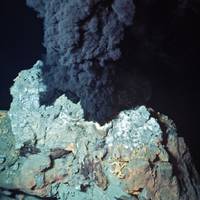
A new study led by scientists at the Woods Hole Oceanographic Institution (WHOI) points to the deep ocean as a major source of dissolved iron in the central Pacific Ocean. Researchers found that iron can travel long distances, highlighting the vital role ocean mixing plays in determining whether deep sources of iron reach the surface-dwelling life that need it to survive. Iron is readily soluble in low oxygen regions at hydrothermal vent sites and along continental margins, but it was believed iron remained in these localized spots and contributed minimally to the ocean's overall iron content.
Cotton, Cox, Harris Receive '14 AOTOS Awards

The United Seamen's Service (USS) 2014 Admiral of the Ocean Sea Awards (AOTOS) were presented to Stephen Cotton, General Secretary of the International Transport Workers' Federation (ITF); Joseph J. Cox, President/CEO, Chamber of Shipping of America; and Frederick J. Harris, President of General Dynamics NASSCO and Bath Iron Works, an American shipbuilder. The maritime industry's most prestigious awards were presented at a gala industry dinner and dance held at the Sheraton New York Times Square Hotel, New York City, on November 7, 2014.
Leaky Equipment, Not Fracking, Behind Tainted US Water -Study
The contamination of water supplies near U.S. shale gas fields appears to be the result of leaky cement wells and casings and not the controversial production technique of hydraulic fracturing, according to a study released on Monday. So-called "fracking" is a way of extracting natural gas from deep layers of rock using high-pressure fluid injections. The method has triggered a surge in U.S. gas production, but raised fears that breaking up rock formations underground could allow gas to seep into drinking water. Scientists from several universities, including Duke, Ohio State, Stanford and Dartmouth, analyzed more than 130 drinking-water well samples overlying the Marcellus and Barnett shale gas formations and attempted to trace the source of any contamination, according to the study.
EPA Mull Methane Regs for Oil & Gas Sector
The U.S. Environmental Protection Agency on Tuesday took a step toward a wider strategy to address climate change, releasing five technical papers that will help it decide whether or not to regulate methane emissions from the oil and gas sector. The "white papers" follow the White House's announcement in March of a plan to reduce methane emissions both domestically and internationally through incentive-based programs and the administration's existing authorities. The suggestion drew a rebuke at the time from the main oil and gas lobby group, the American Petroleum Institute, which said its members were already taking steps to cut emissions.






